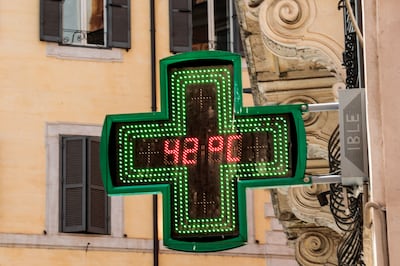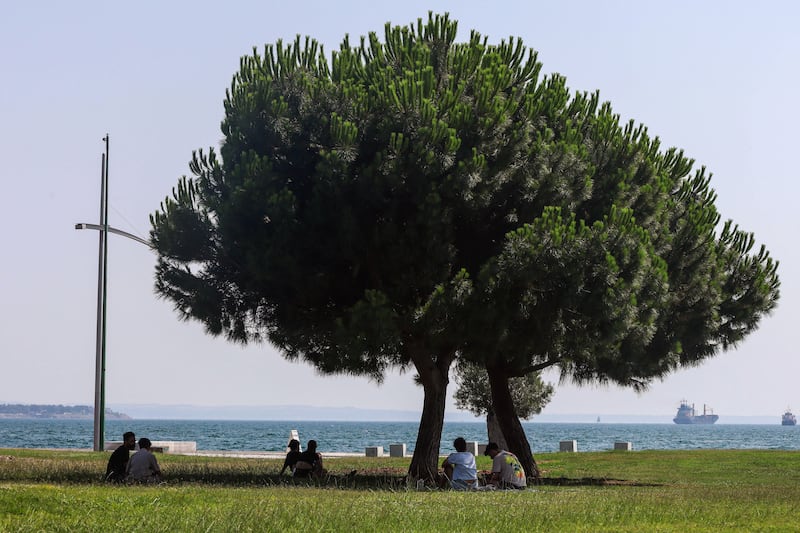People in the UAE looking to escape the summer heat would be well advised to steer clear of southern Europe right now, as the region bakes in extreme temperatures.
The area has entered its second week of searing heat, with some cities recording temperatures higher than those in the Emirates.
It comes as the United States and north-western China also fry in abnormally high temperatures for this time of year.
In China, the national record has been broken, with reports citing the Meteorological Administration revealing that the temperature rose to 52.2°C in the province of Xinjiang on Sunday.
Similarly, in Death Valley National Park in California, temperatures soared well above 50°C and have come close to breaking the record for the area.
Temperature records could fall this week in Europe, as forecasters predict the heatwave will cause the mercury in some areas to soar well above 40°C, potentially putting the lives of more vulnerable residents at risk.

Spain
Among the European locations set to be hotter than Dubai for at least part of this week is Cordoba in southern Spain, where the UK’s Met Office forecast a high of 44°C on Monday. Authorities have issued a red alert in southern Spain because of the hot weather.
On Tuesday the heat is set to move north and east, with the Spanish city of Zaragoza set to experience a high of 44°C, which is 2°C hotter than the maximum forecast for Dubai that day.
Italy
The Italian island of Sardinia, which lies to the west of mainland Italy, is set to be almost as hot, with a high of 41°C forecast for Tuesday.
The European Space Agency has warned temperatures on Sardinia, and on the Italian island of Sicily, which sits off the southern tip of the mainland, could hit 48°C, up to 14°C warmer than Fujairah this week.

Greece
Greece, too, has been hit by uncomfortably high temperatures, so much so that authorities temporarily closed the Acropolis in Athens to tourists.
The extreme temperatures are the result of a high-pressure system over the Mediterranean that is drawing hot air from North Africa.
A heat dome effect, described by the US National Oceanic and Atmospheric Administration as something that happens when the atmosphere "traps hot ocean air like a lid or cap", has meant the hot weather has persisted. This has also been the case in the parts of the US.
Global warming
Climate change, which has caused numerous temperature records to be smashed in recent years, is another reason why the mercury is rising so high.
"We know that the Earth is warming, and last month was the warmest June on record globally as the average temperature rises, and so [does] the frequency and intensity of extreme heat periods," said Bob Ward, from the Grantham Research Institute on Climate Change and the Environment in the UK.
"What we’re seeing in the US and southern Europe is exactly what we have expected from climate change."
Europe’s hottest temperature was recorded in Sicily in August 2021, when the mercury rose to 48.8°C.
Mr Ward said heat domes appeared to be becoming more common.
"The heat domes are high-pressure systems that essentially stay very stable over an area for several days and you get these extended periods of high temperatures and that’s what we’ve been seeing in the southern US and over the Mediterranean," he said.
"These stable high-pressure systems are looking to be becoming more frequent but it’s not clear whether that’s due to climate change.
"The occurrence of the heat domes is mainly an issue that affects the length [of the heatwave], whereas the intensity is undoubtedly due to climate change."
As well as extreme heat, southern Europe has been hit by wildfires, with thousands of homes evacuated on the Spanish island of La Palma, one of the Canary Islands, off north-west Africa.

























